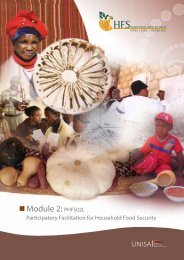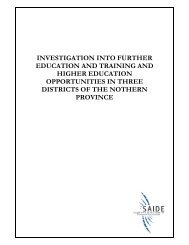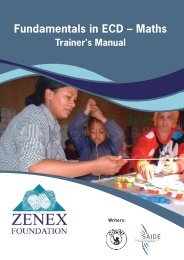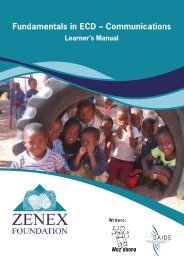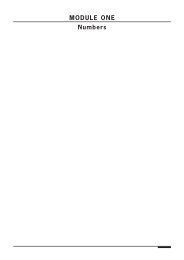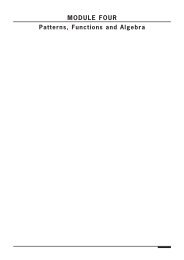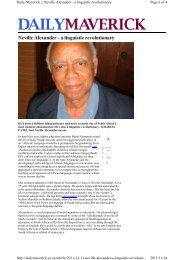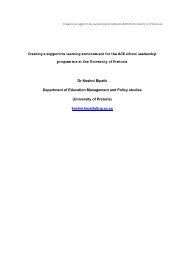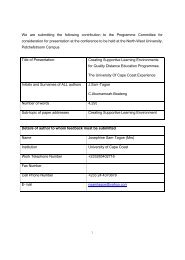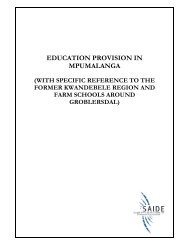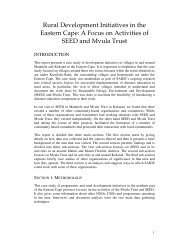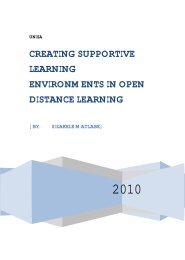Fundamentals in ECD - South African Institute for Distance Education
Fundamentals in ECD - South African Institute for Distance Education
Fundamentals in ECD - South African Institute for Distance Education
Create successful ePaper yourself
Turn your PDF publications into a flip-book with our unique Google optimized e-Paper software.
<strong>Fundamentals</strong> <strong>in</strong> <strong>ECD</strong> : Mathematical LiteracyLearner’s Manual5. Unit Standard 7461Use maps to access and communicate <strong>in</strong><strong>for</strong>mation concern<strong>in</strong>g routes, locationand directionSpecific Outcomes and Assessment Criteria:SO1:Read, <strong>in</strong>terpret and use maps, to depict and make sense of real locations,distances and position (Street maps: local and national maps.)1. Objects are identified on a map.2. The positions of objects on a map are given us<strong>in</strong>g reference po<strong>in</strong>ts on a grid.3. A variety of routes between two po<strong>in</strong>ts on a map are identified and described.4. Appropriate routes are identified and selected to meet the requirements of avariety of circumstances.5. Real distances between po<strong>in</strong>ts on a map are determ<strong>in</strong>ed correctly <strong>in</strong>accordance with the scale.6. Landmarks are used to give direction <strong>in</strong> real life, and these landmarks areidentified and located on a map.7. Directions are given correctly us<strong>in</strong>g maps and <strong>in</strong> real life. (Bear<strong>in</strong>g and the fourcompass po<strong>in</strong>ts.)SO2:Draw maps accord<strong>in</strong>g to scale. (Non-contoured maps.)1. Maps are drawn such that the relative positions of places and objects matchthe real situation.2. A suitable scale is chosen, <strong>in</strong>dicated and applied correctly.3. Symbols used con<strong>for</strong>m to conventional uses or are def<strong>in</strong>ed through a key orlegend.4. The map is clear and neat and conta<strong>in</strong>s all critical <strong>in</strong><strong>for</strong>mation as required bythe situation.5. Maps are converted from one scale to another.6. Unit Standard 7450Work with measurement <strong>in</strong> a variety of contextsSpecific Outcomes and Assessment Criteria:SO1:Apply relationships between common quantities <strong>in</strong> various contexts. (Mass andweight, distance and displacement, speed and velocity, volume and density,volume and surface area, area and perimeter, distance and time, volume andcapacity.)1. Terms are used <strong>in</strong> the proper context.2. Comparisons between quantities are made and differences and relationshipsdescribed.3. Formulae and units are described <strong>in</strong> context to show the relationships anddifferences.xviii



